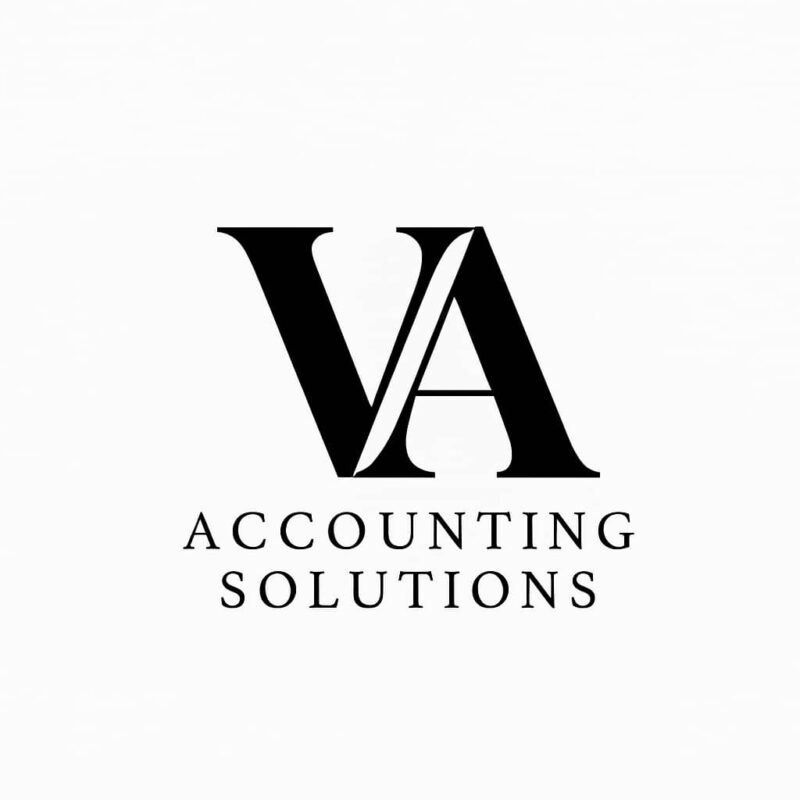For UK landlords, the income received from renting out property is taxable. The amount of tax due is calculated on the rental profit, which is the total rental income less any ‘allowable expenses’. A thorough understanding of which expenses can be legitimately deducted is therefore essential for ensuring tax compliance and maximising the profitability of a property portfolio.
The Definitive List of Allowable Expenses
HMRC guidance stipulates that for an expense to be deductible against rental income, it must be incurred “wholly and exclusively for the purposes of renting out the property”. Capital expenditure, such as the cost of buying the property or making significant improvements, is not allowable against rental income but can be used to reduce Capital Gains Tax upon a future sale.
Common categories of allowable revenue expenses for landlords include :
- Professional Fees: Fees paid to letting agents for tenant-finding and management services, as well as accountant’s fees for preparing rental accounts, are fully deductible. Legal fees for lets of a year or less are also allowable.
- Insurance: The cost of specialist landlord insurance policies, including buildings, contents, and public liability cover, is an allowable expense.
- Property Running Costs: If the landlord is responsible for paying them, costs such as Council Tax, water rates, gas, and electricity are deductible. Ground rent and service charges for leasehold properties are also allowable.
- Maintenance and Repairs: The costs of maintaining the property in a habitable condition are allowable (this is covered in more detail below).
- Direct Costs: Other costs directly associated with the rental business, such as advertising for new tenants, stationery, and the business proportion of vehicle running costs for travelling to the property, can be claimed.
Many landlords overlook the fact that certain expenses incurred before the property is first let can also be claimed. While the initial costs of purchasing the property (e.g., solicitor’s fees, stamp duty) are capital, revenue expenses incurred in the run-up to the first tenancy, such as landlord insurance or pre-let safety checks, can be deducted from the first year’s rental income.
Repairs vs. Capital Improvements: An HMRC-Compliant Guide
One of the most frequently misunderstood areas of property tax is the distinction between a deductible repair and a non-deductible capital improvement. Getting this wrong can lead to an incorrect tax return and potential penalties from HMRC.
- A Repair is an expense that restores an asset to its previous condition. It is a revenue expense and is therefore allowable against rental income. Examples include redecorating a property between tenancies, replacing a broken-down boiler, or fixing a damaged roof.
- An Improvement is expenditure that enhances, alters, or upgrades the property beyond its original state. This is treated as capital expenditure. Examples include building an extension, adding a conservatory, or significantly reconfiguring the internal layout.
The line can often be blurred. HMRC provides a key principle known as the “modern equivalent” rule. This states that replacing a part of the property with its nearest modern equivalent is still considered a repair, even if it provides an incidental improvement. The classic example cited by HMRC is replacing old single-glazed windows with modern double-glazed units. The primary purpose is to replace the windows (a repair), and the fact that the modern standard offers better insulation is an incidental benefit. The key is to assess the primary purpose of the work: is it to fix something that is worn or broken, or is it to substantially upgrade the asset?
For furnishings, landlords can claim ‘Replacement of Domestic Items Relief’. This allows a deduction for the cost of a like-for-like replacement of items such as beds, sofas, carpets, fridges, and crockery. The initial cost of furnishing a property from scratch is not allowable, only the cost of subsequent replacements.

The Section 24 Restriction: How Mortgage Interest Tax Relief Works Now
A significant change in recent years, often referred to as ‘Section 24’, has fundamentally altered how landlords receive tax relief on their finance costs. Since 6 April 2020, landlords of residential properties can no longer deduct any of their mortgage interest or other finance costs (such as mortgage arrangement fees) from their rental income when calculating their taxable profit.
Instead, tax relief is provided as a basic rate tax reduction, or tax credit, equivalent to 20% of the landlord’s finance costs. This change does not affect basic-rate taxpayers, who continue to receive relief at 20%. However, it has a major negative impact on higher-rate (40%) and additional-rate (45%) taxpayers, who previously received relief at their marginal rate.
Crucially, this change alters how a landlord’s total taxable income is calculated. Because mortgage interest is no longer a deductible expense, the landlord’s declared property profit is now higher. This can push some individuals into a higher income tax bracket than they were in previously. This higher ‘adjusted net income’ can have significant knock-on effects, such as triggering the High Income Child Benefit Charge or causing the gradual withdrawal of the tax-free Personal Allowance for those with income over £100,000.
HMRC guidance specifies that the tax reduction is calculated as 20% of the lower of three figures: the total finance costs for the year, the property business profits, or the landlord’s adjusted total income. Any finance costs that are not relieved in a given year due to these limits can be carried forward to be used in future years. This makes it essential for landlords to understand their entire financial picture, not just their property income, to assess the full impact of these rules.
FAQs
How to avoid paying tax on rental property in the UK?
It is not possible to legally avoid paying tax on rental property if you are making a profit. However, you can significantly reduce your tax liability by claiming all your allowable expenses. These costs are deducted from your rental income before tax is calculated. The goal of a tax-efficient landlord is not tax evasion, but to legally minimise taxable profit by ensuring every legitimate expense, from mortgage interest to minor repairs, is properly accounted for.
What are the tax implications for landlords in the UK?
Landlords in the UK face two primary tax implications. Firstly, the profit you make from renting out a property is subject to Income Tax. This profit is calculated by subtracting your allowable expenses from your total rental income. Secondly, if you sell the property for more than you paid for it, the profit is subject to Capital Gains Tax (CGT). The rates for CGT on residential property are higher than on other assets.
What is the most tax-efficient way to own rental property?
The most tax-efficient ownership structure depends on your personal financial situation, particularly your income tax rate. For higher-rate taxpayers, owning property through a limited company can be more efficient. This is because companies pay Corporation Tax on profits (currently 19-25%) rather than higher personal income tax rates (40-45%). Companies can also deduct 100% of their mortgage interest as a business expense, whereas individual landlords can only claim a 20% tax credit. However, setting up and running a company comes with additional administrative costs and complexity.
How much tax do you pay on a rental property in the UK?
The amount of tax you pay is based on your rental profit, which is added to your other income (like a salary from a job). This total income determines your tax band. For the 2025/2026 tax year, you will pay:
- 0% on rental profits that fall within your Personal Allowance (up to £12,570).
- 20% (Basic Rate) on profits above your personal allowance up to £50,271.
- 40% (Higher Rate) on profits between £50,271 and £125,140.
- 45% (Additional Rate) on profits over £125,140.
How many landlords don’t pay tax in the UK?
It is impossible to give an exact figure, but HMRC actively investigates tax evasion in the rental market through its “Let Property Campaign,” which encourages landlords to disclose unpaid tax. While the vast majority of landlords comply with their tax obligations, a minority intentionally or unintentionally fail to declare their full rental income. HMRC estimates the “tax gap” from the property sector to be significant, suggesting that thousands may be underpaying.
What can landlords claim against tax in the UK?
Landlords can claim a wide range of expenses incurred “wholly and exclusively” for the purpose of renting out the property. Key claims include:
- Mortgage interest finance costs (as a 20% tax credit).
- Letting agent and management fees.
- Landlord insurance.
- Council tax and utility bills (if you pay them, not the tenant).
- Maintenance and repairs (e.g., fixing a boiler, decorating between tenants).
- Accountancy fees.
- Direct costs like advertising for new tenants.
You cannot claim for capital improvements, such as building an extension.
Who most likely actually pays the tax on rental property?
While the landlord is legally responsible for paying the tax to HMRC, the economic burden of the tax is often shared. Landlords will factor their tax obligations and other costs into the rental price they set. Therefore, tenants indirectly contribute to the tax costs through their rent payments. In a market with high rental demand, landlords can pass a larger portion of this cost on to tenants. Conversely, in a market with low demand, landlords may have to absorb more of the cost themselves to remain competitive.
What is the best type of rental property to own?
The “best” type of rental property depends on your goals, budget, and desired level of involvement. A single-let terraced house in a good residential area often provides a balance of stable tenants and manageable upkeep. Houses in Multiple Occupation (HMOs) or student lets can generate higher rental yields but come with more intensive management and stricter regulations. Buy-to-let flats can be a good entry point but may have service charges to consider.
What is the best ROI for rental property?
A good Return on Investment (ROI) for a rental property in the UK is typically considered to be between 5% and 8% in terms of rental yield (annual rent divided by property value). However, total ROI must also factor in capital appreciation over time. The best ROI is often found in areas with a strong combination of high rental demand, potential for house price growth, and relatively affordable property prices, such as university cities and towns undergoing regeneration.
How to best manage a rental property?
Effective management involves several key practices. Firstly, thorough tenant screening is crucial to find reliable individuals who will pay rent on time and look after the property. Secondly, you must be legally compliant, ensuring gas and electrical safety certificates are up to date and tenant deposits are protected in a government-approved scheme. Finally, being responsive to maintenance issues keeps tenants happy and protects the value of your asset. Many landlords choose to use a reputable letting agent to handle these tasks, especially if they lack the time or expertise.
What is the easiest type of property to rent?
Generally, a modern, well-maintained two or three-bedroom house or a two-bedroom flat in an area with strong transport links and local amenities is the easiest type of property to rent. These properties appeal to the broadest range of potential tenants, including young professionals, couples, and small families, which are often the largest demographics in the rental market. This high demand typically leads to shorter void periods between tenancies.
